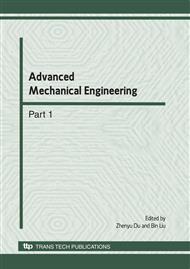p.591
p.598
p.603
p.608
p.612
p.616
p.620
p.625
p.637
Super Fuzzy Defect Classifier Based on Self-Adaptation
Abstract:
Aiming at the situation that feature extraction of image defects is slow, the accuracy is not high, this paper proposes a new super-fuzzy defect classifier based on self-adaptation, in which defect classification can be judged and determined intelligently according to different image windows feature. Firstly, a specific model of adaptive super-fuzzy classifier is given. Then, this algorithm is applied to defect recognition of fabric image for algorithm effect checking. Results show that this adaptive super-fuzzy classifier has some characteristics, such as high speed, simple calculation, no membership degree calculation, and the accuracy and threshold of defect classification can be made intelligent estimation according to different cases with this classifier.
Info:
Periodical:
Pages:
612-615
Citation:
Online since:
June 2010
Authors:
Keywords:
Price:
Сopyright:
© 2010 Trans Tech Publications Ltd. All Rights Reserved
Share:
Citation:


